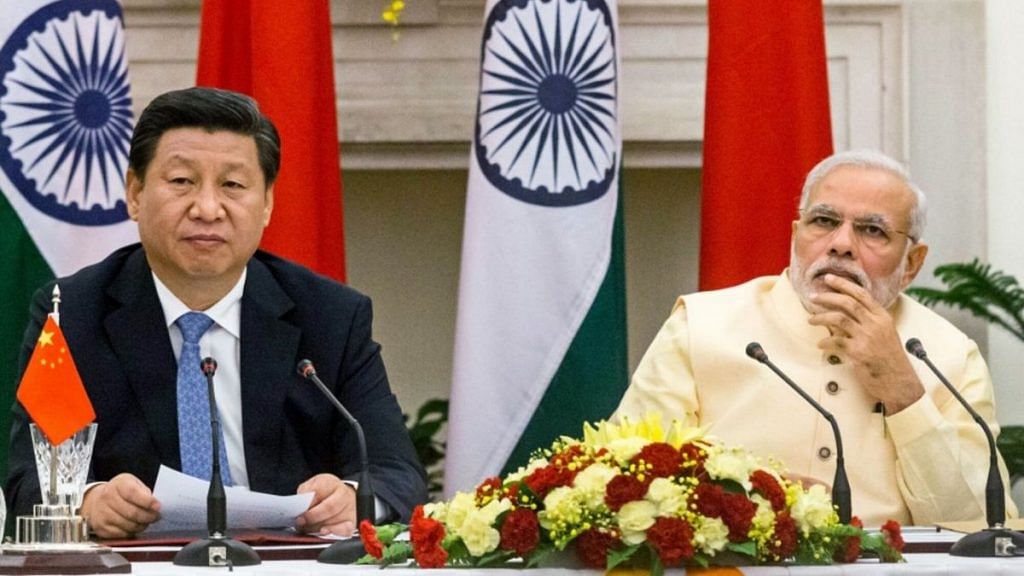India’s strategic managers face a difficult problem: both China and Pakistan use asymmetric means that are not easy to counter. Pakistan uses terrorism because it ties down India’s stronger conventional military forces. And China has mastered the art of salami-slicing territory that is equally difficult to thwart, not just for India, but for China’s other neighbours and even the US. With the surgical strike and the Balakot attack, India may have found an appropriate response to Pakistan’s asymmetric tactics. But China is a harder nut to crack. New Delhi needs to think of other ways to tackle it.
Asymmetric tactics are difficult to counter. India’s traditional counter has been defence, but this clearly did not work against either Pakistan or China. Of course, defence has to be part of the strategic mix, but by itself, it will not work.
In dealing with terrorism, defences can never work perfectly every time. If the terrorists fail once, they can try again and again. As is well-known, the terrorist can afford to fail many times but only needs to succeed once, while the defence has to be successful every time. India’s fight against terrorism is a standing testament to this: however much India tightened its defences, it could never stop the attacks.
Defences are also a poor solution to salami-slicing tactics, as we are witnessing along the Line of Actual Control. The problem is that each individual act is so small that it passes without challenge. It is always tempting to ignore such infractions and to excuse it as a reaction to a mistake that others made. After all, in the South China Sea, other countries had also occupied some portions of the islands and even built ramshackle huts on them. Now we know different, but it is of course too late. Salami-slicing tactics encourage second-guessing by the victims, which further undermine any response.
Another problem with countering such tactics is that it is difficult to defend everywhere, especially in inhospitable terrain or in the waters. But the end result is that China has now asserted control over much of the South China Sea and is repeating the same method in Ladakh. India should be familiar with this: the Chinese used the same method successfully in the run-up to the India-China war in 1962. In trying to defend ‘every inch of land’, India ended up in an unsustainable military position.
Also read: PM Modi’s silence on LAC stand-off is benefiting China. India must change its script
Tackling Pakistan
There are alternatives to a purely defensive response to asymmetric attacks. One can mimic such asymmetric strategies, paying China back in the same coin. There is an agreeable symmetry to this, but agreeableness is, of course, less important than effectiveness. Doing this requires capacity and political willingness.
For example, Prime Minister Narendra Modi signalled a change on India’s Balochistan policy early on, which was seen as a tit-for-tat response to Pakistan’s terror strategy. But little appears to have actually been done, either because India lacks the intelligence and covert action capability to actually implement such a policy or the government simply lost its nerve. There is also the moral equivalence problem: can democratic India support groups that engage in such actions? India has supported such groups before but does it become problematic when India puts so much stress on international diplomatic action against terrorism?
Capability and political risk-acceptance become even more important if India wants to embark on its own salami-slicing tactics to counter China. Such tactics could quickly escalate: India’s forward policy in the run-up to the 1962 war was attempted without sufficient military capability to deal with escalation and we paid for it. Indian capabilities are far better today but the risks cannot be dismissed.
India may have found at least a partial answer to Pakistan’s asymmetric strategy of using terrorism: escalation. Both the surgical strike and the Balakot attack demonstrated that India had the political will to use its superior military capabilities. The debate about whether Indian bombs hit the target is irrelevant: Pakistan now has to factor the probability of an Indian escalation next time it plans a terror strike, something it did not appear overly concerned with before.
Also read: India has a bigger worry than LAC. China now expanding military footprint in Indian Ocean
Tackling China
The challenge is not over, of course. Pakistan Prime Minister Imran Khan’s recent claims about a ‘false-flag’ operation by India and the foiling of a Pulwama-type terror attack a few days later may suggest that Pakistan will continue to use such tactics, which means that India will need to be prepared to escalate and punish again if another such attack takes place.
It is doubtful that such military escalation tactics will work in China’s case. But there are other ways to escalate that could work. New Delhi can signal that continued pressure on the border can have repercussions, such as strengthening Indian strategic partnerships with the US and others. India could also become more vocal about issues such as China’s roadbuilding in Pakistan-occupied Kashmir, its role in the coronavirus pandemic, or its behaviour in Hong Kong. These have no intrinsic value to India, but to the extent that China values its narrative, they represent points of vulnerability that India can exploit.
Escalation is undesirable and would hurt both sides. China can surely respond in kind. But asymmetric tactics should not be tolerated either. The alternative to escalation is being repeatedly victimised, as India was for decades by Pakistan’s terrorism.
The author is a professor in International Politics at Jawaharlal Nehru University (JNU), New Delhi. Views are personal.
